North Carolina stretches from the sea westward to some of the highest mountains in Eastern North America, encompassing habitats from the almost subtropical to the nearly arctic. Not surprisingly, the state has a lot of mushrooms, particularly in the mountains. There are, of course, too many to name and discuss in one article, but we can give you a few brief highlights of what the state has to offer.
Our Recommended Field Guides for North Carolina
COVER | TITLE | Header | ||
|---|---|---|---|---|
OUR #1 RATED | ||||
Edible Wild Mushrooms in North Carolina
Edible wild mushrooms have a reputation for being tricky, dangerous—and indeed, articles like this one are full of warnings, for good reason. But most mushroom species aren’t actually difficult to identify. The problem is that most people are not used to paying attention to the sort of details that mark one species as different from another, so beginners can easily make dangerous mistakes. Even experienced foragers sometimes experience a moment of enthusiastic complacency and overlook something important. So there is no reason to be scared of mushrooms. There’s no reason not to explore, not to literally taste, what they have to give—provided one develops the skills to do so and uses them.
If you do indeed go Mushroom Hunting make sure you have the proper tools, take a quality knife with you and a basket/bag for your haul!
This list is not meant to be used as a replacement of a field guide, spore prints, an identification app or a guide.
Here is an introduction to some of North Carolina’s edible mushrooms[i].
Chanterelles (Cantharellus sp.)
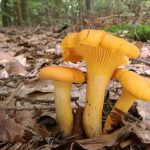

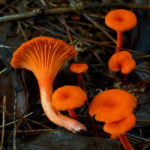



The Chanterelles are a group of distinctive-looking and delicious edible mushrooms. Some writers claim that all chants are safe to eat, making them a good choice for beginner foragers. The claim is true in the strict sense, in that all members of the Cantharellus genus are considered safe to eat—but there are also members of other genera, such as Craterellus and Gomphus that are sometimes referred to as chanterelles. Some of these are safe to eat, but some are not. Beginners also sometimes fail to distinguish the distinctive ridges or false gills of the chanterelle from the gills of many other groups, and pick poisonous mushrooms instead of the intended chants.
Not to discourage anyone from eating chanterelles, just use the same caution as with other mushrooms.
North Carolina’s most famous chanterelle, The Golden Chanterelle, is large, yellow, and uncommonly good. It also is a bit of a mystery[ii]. While golden chants are generally referred to as Cantharellus cibarius, it now seems unlikely that species grows in the state, leaving it unclear what species North Carolina’s golden chant is. It could even be more than one. Other chants in the state include the Cinnabar-Red (C. cinnabarinus) and the Smooth (C. lateritius).
Morel (Morechella sp.)
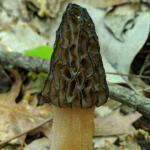

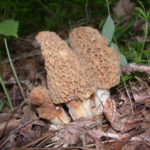

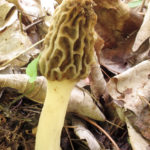

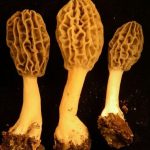

The morels are another distinctive and delicious group that are a little trickier than often claimed. For one thing, they do have poisonous look-alikes (though most people who eat false morels do so on purpose—the safety of doing so is hotly debated). For another, morels themselves are toxic when raw, and even fully-cooked morels do occasionally sicken eaters. Perhaps they just taste too good to avoid?
Although morels are easy to identify as a group, they are difficult to name to species. Many either look alike or vary a lot or both, and the taxonomy is still being worked out[iii]. In North Carolina, what are called black morels seem to be Morchella angusticeps, while yellow morals could be M. esculentoides, M. diminutiva, or M. virginiana[iv].
Chicken-of-the-Woods (Laetiporus sp.)


Chicken-of-the-woods (also sometimes called Sulfur Shelf) has confused foragers for years, since some specimens are delicious, others are very tough, and a few cause illness. For a while, the difference was thought to involve which species of tree the fungus was growing on, and much advice was issued about which to avoid. The truth, in this case, turns out to be simpler. The chicken-of-the-woods is actually a group of multiple species, not all of which should be eaten[v].
Unfortunately, the taxonomy is still being worked out, so it’s not clear which North Carolina has. A little cautious trial-and-error may be necessary, plus the most up-to-date field guide available. The best of the flock, if properly cooked, really do taste like chicken.
Maitake
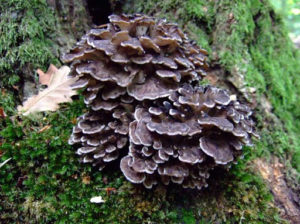

Maitake is also called Hen-of-the-Woods, a name easy to confuse with Chicken-of-the-Woods, although the mushrooms themselves don’t look much alike. Maitake does look a bit like a pile of gray chicken feathers. It tastes excellent pan-fried with cheese (the way cheese-steaks are cooked), and reportedly has medicinal potential.
Shaggy Mane (Coprinus comatus)
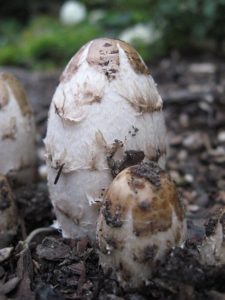

Shaggy Mane[vi], like its relative, The Ink Cap, has the remarkable property of turning to black goo as the spores mature. The lower edge of the long, narrow cap liquefies and drips away first, then the gooification progresses upwards. One might think the process disgusting, but actually the black liquid is edible and works as a food dye. The mushroom before it liquefies is quite good, especially with chicken or rice. Just be sure to eat shaggy mane quickly, as it does not keep long.
Also, never drink alcohol with Shaggy Mane (or Ink Cap) or within several days of eating these mushrooms. They contain a toxin that is only activated by alcohol.
Psychedelic Magic Mushrooms in North Carolina
Various species of psychoactive mushrooms do grow wild in North Carolina, yes[vii]. It is against both state and Federal law to possess or use these mushrooms, and penalties can be severe[viii] but it can’t hurt to know what they are.
Panaeolus
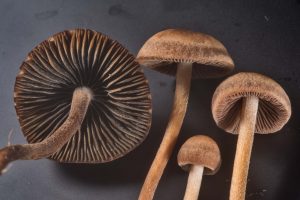



Panaeolus mushrooms[ix] are called commonly Mottlegills, because of the spots that develop on the gills as the spores develop. Not all are psychoactive, and some authorities place those that are in a separate genus, Copelandia. North Carolina has two of these actives, The Banded Mottlegill (P. cinctulus)[x], which is of low potency, better for micro-dosing, perhaps, and The Blue Meanie (P. cyanescens)[xi], one of the most potent psilocybin-containing mushrooms known.
Gymopolus


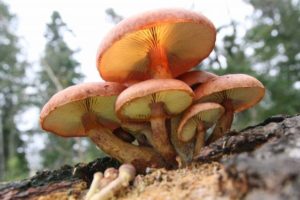

Gymnopilus is a large genus with just a few “active” members, none of which are well-known. They are said to produce a qualitatively different high than Psilocybes or Panaeolus mushrooms, suggesting they may contain something in addition to psilocybin. North Carolina has three active species: G. aeruginosus, G. luteofolius[xii], and something in the confusing G. junonius group, possibly G. luteus[xiii].
Psilocybe
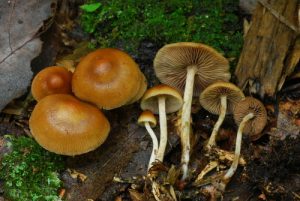

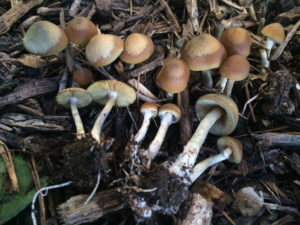

Psilocybe is the best-known of the “magic” genera, possibly because Psilocybe cubensis—which does grow wild in North Carolina—is so commonly cultivated. North Carolina has at least two other Psilocybes as well, both of which have the common name, blue-foot: P. caerulipes[xiv] and P. ovoideocystidiata[xv].
Poisonous Mushrooms in North Carolina
The following list is not exhaustive. That is, the fact that a mushroom isn’t listed here should not be taken as evidence that it is safe. This section is just to highlight some of the state’s more dangerous residents and to show what sorts of challenges the forager might have to meet[xvi].
It’s worth noting, though, that these mushrooms aren’t dangerous unless somebody eats them. Otherwise, they are fascinating and sometimes beautiful organisms, each with its own place in the ecosystem.
Destroying Angel (Amanita bisporigera)
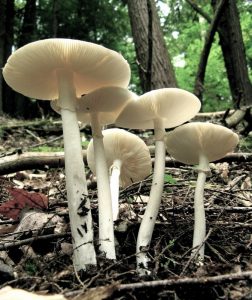

The name, destroying angel, is rather aptly applied to several very similar species in the Amanita genus, all of which are handsome, large, white or whitish, and capable of killing almost anyone who eats them. It’s not difficult to figure out that a mushroom is one of the destroying angels—poisonings typically occur when somebody skips an identification step—but figuring out which Destroying Angel one has is another matter. The North Carolina species is A. bisporigera[xvii], but some writers claim other species for the state, possibly in error. Either way, the important thing is not to eat any destroying angel.
Not all Amanitas are toxic, and not all those that are toxic are usually deadly, but not all Deadly Amanitas are in the destroying angel group. It’s a good idea to treat any Amanita with suspicion until it is definitely proven safe.
Deadly galerina (Galerina marginata)
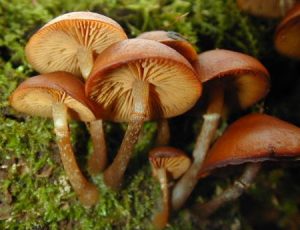

The Deadly Galerina is a very widespread but non-descript species that contains the same toxin that the unrelated Destroying Angels do. It’s smallish and brownish and looks almost exactly like many other small, brownish mushrooms, including some popular edible species and most of the magic mushrooms. Worse, it has a habit of growing with, or even mixed in among, some of its look-alikes. That means identifying some of the mushrooms in a clump is not good enough. Every mushroom picked for eating must be carefully identified, or the eater could die.
Jack o’Lantern (Omphalotus illudens)
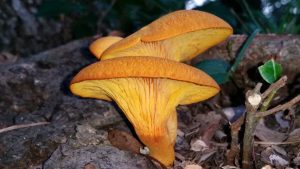

Jack o’Lantern mushrooms are famous for glowing faintly and for faintly resembling some chanterelle species and for being more than faintly poisonous. They are not typically deadly to eat, but are extremely unpleasant. This species is a very good reason why beginners shouldn’t go foraging for mushrooms alone—in the beginning, distinctions that look obvious to the experienced eye aren’t, and mistaking a poisonous jack for an edible and delicious chanterelle.
False Parasol (Chlorophyllum molybdites)
The False Parasol is not deadly, but eating one becomes deeply unpleasant—usually. It’s part of a group of very similar mushrooms that are sometimes dangerous, sometimes not, for no clear reason. Of the group, this one is the most likely to make an eater ill. And, like most poisonous mushrooms, it’s easy to mistake for any of several safer species if one does not pay proper attention to detail.
Our Recommended Field Guides for North Carolina
COVER | TITLE | Header | ||
|---|---|---|---|---|
OUR #1 RATED | ||||
References:
[i] (2019). Everything You Need to Know About Mushroom Foraging in Ashville. Beverly-Hanks Realtors
[ii] McHugh, A. M. (2015). Chanterelle Hunting in North Carolina and Beyond. Crazy About Mushrooms Blog
[iii] Kup, M. (2012). The Morchellaceae: True Morels and Verpas. MushroomExpert.Com
[iv] McHugh, A. M. (2015). Chanterelle Hunting in North Carolina and Beyond. Crazy About Mushrooms Blog
[v] Margulies, E. (2006). Eating Chicken of the Woods. Cornell Mushroom Blog
[vi] Adamant, A. (2018). Foraging Shaggy Mane Mushrooms. Practical Self-Reliance
[vii] (n.d.). Which Psilocybin Mushrooms Grow Wild in My Area? Shroomery
[viii] Minick Law (2020). Psychedelic Mushrooms in NC—Elements and Punishments. Minick Law
[ix] (n.d.). Panaeolus. Wikipedia
[x] (n.d.). Panaeolus cunctulus. Philosophy
[xi] Barlow, C. (2021). Blue Meanies Mushrooms: A Guide to the Potent Panaeolus cyanescens. DoubleBlind
[xii] (n.d.). Gymnopilus luteofolius. Philosophy
[xiii] Kuo, M. (2012). Gymnopilus luteus. MushroomExpert.Com
[xiv] (n.d.). Psilocybe caerulipes. Philosophy
[xv] Roderick (2019). Psilocybe ovoideocystidiata. Psillow
[xvi] Jarvis, R. (2021). Nine of the World’s Most Toxic Mushrooms Can Be Found in North Carolina Each Year. Only in Your State
[xvii] (n.d.). Amanita bisporigera. North Carolina Extension Gardener Plant Toolbox


My name is Austin Collins.
I've dedicated my life to Mushrooms.
I believe Mushrooms are the best kept secret when it comes to health and well being.
For that reason, I would like to share a company with you that in my opinion makes the best mushroom products on the market.
The company is called Noomadic Herbals, my favorite supplement they make is called "Mushroom Total".
I take their products every day and they have helped me think better and have more energy. Give them a try.
-Austin

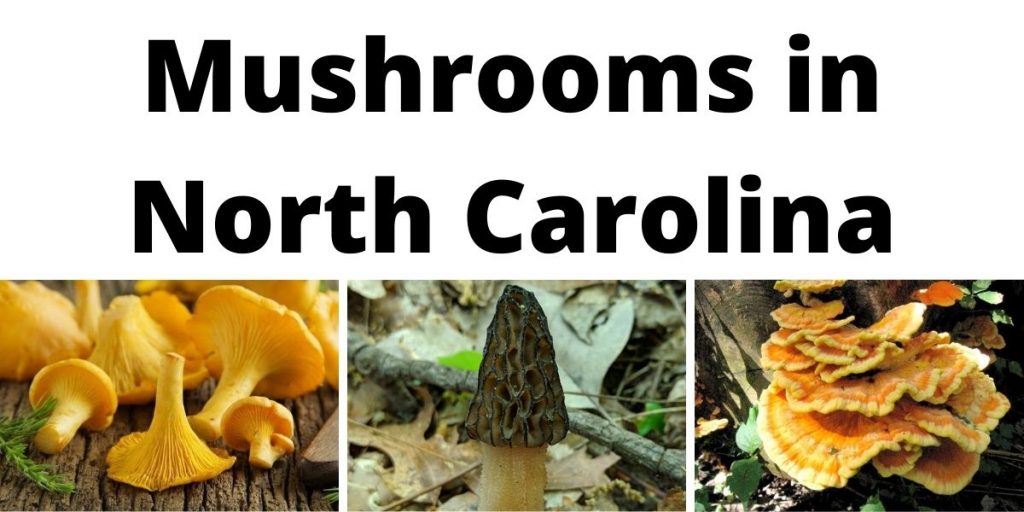
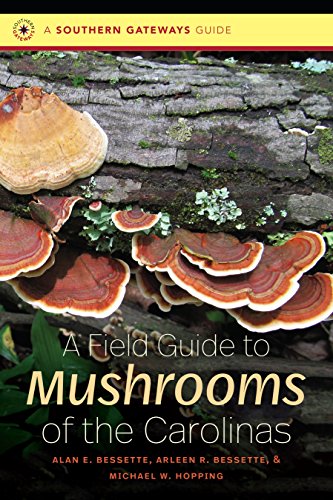
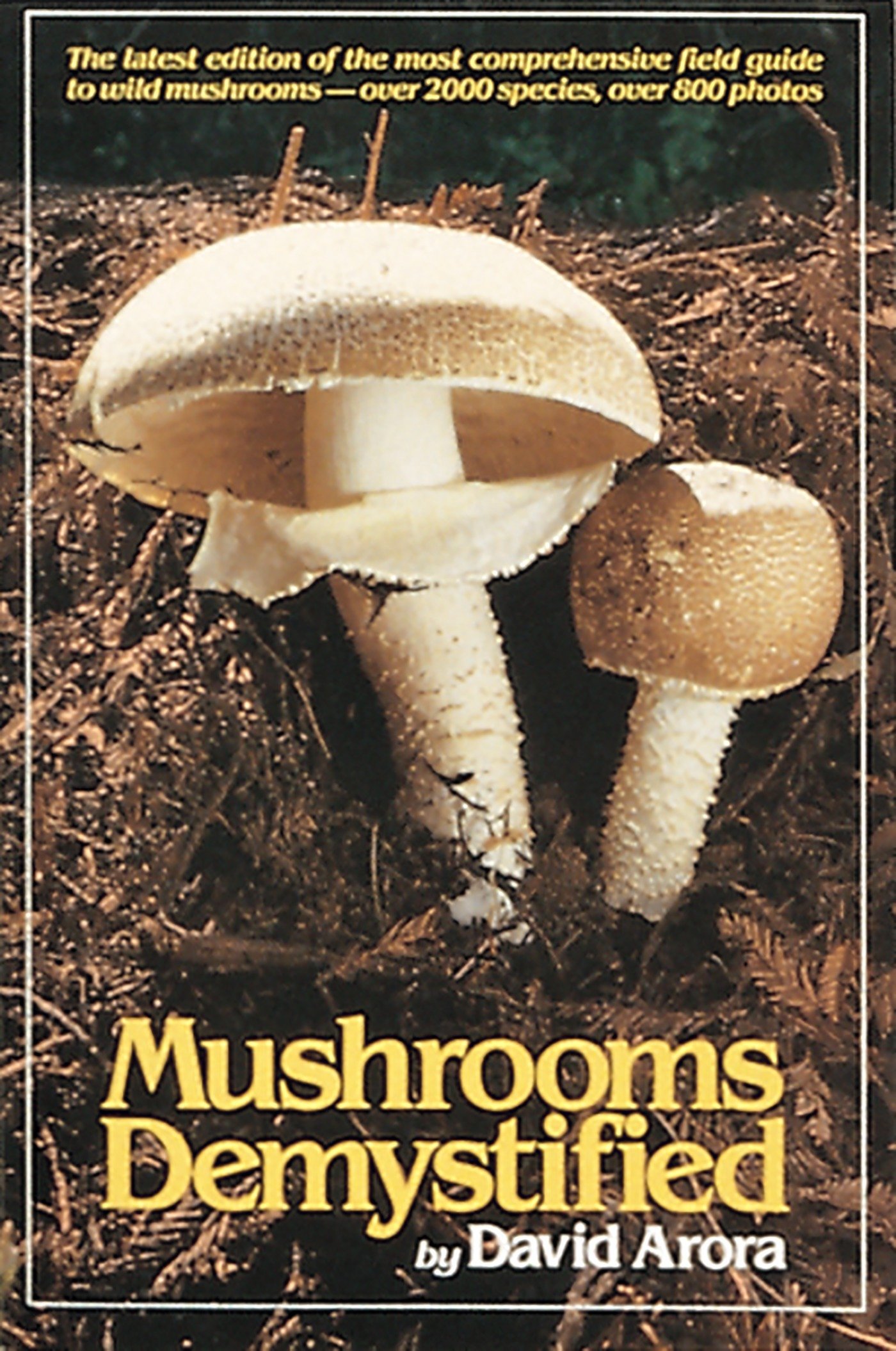


Hey, I found a lone lactarius indigo up by Pilot rock trail yesterday. I notice you don’t have this listed. Is it rare to find? Also, what is your experience the edibility?
Hi Carolita,
There are too many mushrooms in North Carolina to cover in a single article, which is why I recommend field guides to buy for your area.